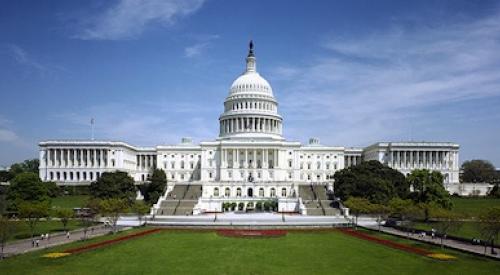U.S. house prices fell modestly in the fourth quarter of 2011 according to the Federal Housing Finance Agency’s (FHFA) seasonally adjusted purchase-only house price index (HPI). The HPI—calculated using home sales price information from Fannie Mae- and Freddie Mac-acquired mortgages—was 0.1 percent lower on a seasonally adjusted basis in the fourth quarter than in the third quarter.
On an unadjusted basis, prices fell 1.1 percent during the quarter. Over the past year, seasonally adjusted prices fell 2.4 percent from the fourth quarter of 2010 to the fourth quarter of 2011.
FHFA’s seasonally adjusted monthly index for December was up 0.7 percent from its November value. On a not-seasonally adjusted basis, prices were flat over the November-to- December period.
“While FHFA’s national index shows a 2 percentage point price decline over the latest four quarters, 12 states and the District of Columbia posted price increases,” said FHFA Principal Economist Andrew Leventis. “When coupled with the fact that about half of all U.S. states saw price increases in the latest quarter, this growth adds to mounting evidence that real estate markets are seeing at least some signs of life.”
FHFA’s expanded-data house price index—a metric introduced in August that adds transactions information from county recorder offices and the Federal Housing Administration to the HPI data sample—fell 0.8 percent over the latest quarter. Over the latest four quarters, the index is down 2.9 percent.
While the national, purchase-only house price index fell 2.4 percent from the fourth quarter of 2010 to the fourth quarter of 2011, prices of other goods and services rose 4 percent over the same period. Accordingly, the inflation-adjusted price of homes fell approximately 6.2 percent over the latest year.
Significant Findings:
• The seasonally adjusted purchase-only HPI rose in the fourth quarter in 27 states and the District of Columbia.
• Of the nine Census Divisions, the West South Central Division experienced the strongest prices in the latest quarter, posting a 1.1 percent price increase. Prices were weakest in the Middle Atlantic Division, where prices fell 1.2 percent.
• As measured with purchase-only indexes for the 25 most populated metropolitan areas in the U.S., four-quarter price declines were greatest in the Chicago-Joliet- Naperville, Ill., area, which saw price declines of 9.8 percent between the fourth quarters of 2010 and 2011. Prices held up best in Warren-Troy-Farmington Hills, Mich., where prices rose 3.5 percent over that period.
Highlights
This quarter’s highlights article discusses recent revision patterns in the monthly HPI. Noting that first-time revisions in the estimated monthly rate of change have been persistently negative, the analysis evaluates whether the phenomenon may be related to distressed sales. Some evidence suggests that distressed sales, which usually occur at discounted prices relative to other transactions, may be entering the HPI estimation data sample with a greater lag than other transactions. Though not determinative, the analysis indicates the lag could at least partially account for the negative revisions.
To read the rest of the report, click here.











